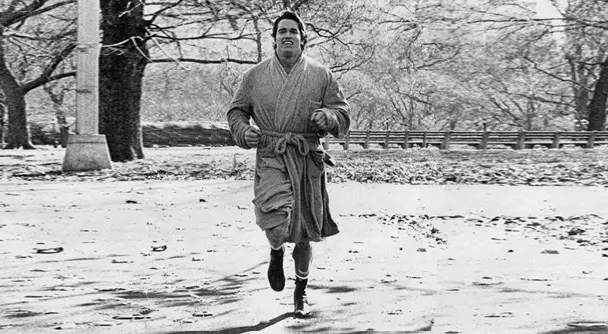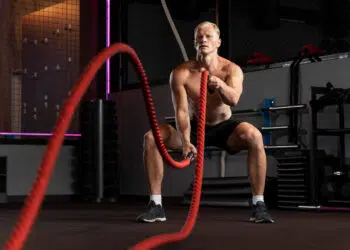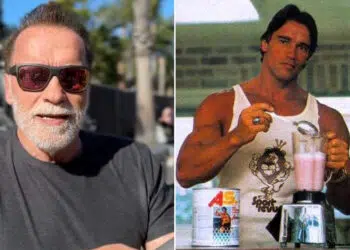In the first article, I looked at the benefits of doing cardio during a muscle mass building phase. Today I’m going to focus on some of the detriments to doing so, whether they be real, or perceived. The most common beliefs of those that are opposed to doing any cardio during a phase of muscle growth, are that cardio will use up energy that would otherwise go towards muscle growth. It is also suggested that overtraining is more likely to occur due to the extra energy being used for the cardio.
To first address the issue of the extra energy being used for cardio that would be better used for muscle growth first; this is of course possible. Most likely only if the cardio is done excessively, and the idea here is to do cardio at a low intensity, for 20 minutes following weight training. The few hundred calories used during cardio activities is easy to replaced on a day-to-day basis. The concern that somehow doing this small amount of cardio is preventing calories and protein from getting to the muscle to support growth defies all logic, not to mention science.
There are of course exceptions to every rule, and this case is no different. If you are one of those that has an extremely tough time putting on any weight, and the authentic version of those who literally use up everything they consume is much rarer than you would think, then cardio would be counterproductive to the goal of building muscle mass. If you rarely have to worry about getting lean in the first place, then you probably should avoid any cardio so that all of your energies and food intake go towards training and gaining muscle mass.
Then there is the possibility that there is an exception to this exception. I’m referring to appetite. The classic ectomorphic/hardgainer in reality has a lot of trouble eating enough calories in order to gain sufficient quantities of muscle mass. Outwardly it may appear that these types are bottomless pits when it comes to eating, but one of the reasons they tend to stay so lean is that their appetite dissipates immediately when they begin regularly eating above maintenance. In this situation, the fact that cardio tends to stimulate appetite needs to be factored in as well.
The second concern is that trying to combine both heavy weight training and cardio training will impair results in the weight room. There is some truth to that, as a large amount of research suggests that the combination of cardiovascular and strength training tends to cause an interference in terms of results. While cardiovascular training tends to impair strength performance, heavy strength training doesn’t seem to impair the adaptations to endurance training, but we aren’t concerned with that in this article.
Level Up Your Fitness: Join our 💪 strong community in Fitness Volt Newsletter. Get daily inspiration, expert-backed workouts, nutrition tips, the latest in strength sports, and the support you need to reach your goals. Subscribe for free!
These studies need to be taken with a grain of salt however, because most of these studies were using some fairly high intensites of cardio. When intensity is kept down, and the volume and frequency is more moderate, the potential negative impact of cardiovascular training on adaptations in the weight room is massively reduced.
The legs are what typically take a beating when doing cardio since most cardio modes are lower body dominant. Due to this case you need to consider alternating between various cardio exercises in order to not be doing any repetitive damage to the musculature. Include rowing, and bike, as well as the treadmill and the elliptical trainer. This relates to the above points on interfering with recovery, especially of the legs, and is worthy of consideration.
Having looked at the benefits to doing cardio when muscle mass gaining, and some of the negatives, which are basically non applicable, with the one possible exception of the person that has an extremely hard time gaining weight (even in that case as I mentioned above), it looks to be fairly obvious that doing some low intensity cardio will definitely benefit the goals of someone who is trying to build more muscle, but I’ll still sum this all up.
As long as the intensity stays moderate, and the volume stays relatively low, there are only advantages to adding cardio to a mass growth phase. Doing so will maintain some basic cardiovascular fitness, burn off a few calories, act as active recovery, and help to keep the fat burning pathways active so that the shift to dieting is a little bit easier, without having any major impact on progress in the weight room.
I wouldn’t advise doing more than 20 minutes per cardio session, after weight training. If you choose to do so, it likely won’t do any harm, but the goal is still to devote the majority of your energy to growing, all the while receiving the benefits of doing a little cardio. A maximum heart rate of 140 beats per minute or even lower should be observed in order to achieve these benefits without cutting into recovery or growth.
Something else worth mentioning is that bodybuilders have done low intensity cardio as a method of fat loss with success for many years. These are the same bodybuilders whose goal it is to step on stage with the most muscle mass possible while having the lowest levels of body fat possible. If doing low-intensity cardio was detrimental to their muscle size, it would have been discovered by now, and 20 minutes during a phase that involves an abundance of calories should really be no issue at all related to muscle loss.
In order to get all of the muscle growth benefits that include improved recovery, improved work capacity, better calorie partitioning, improved appetite, maybe staying a little leaner, and having an easier time shifting back into dieting when the mass gaining phase is over, it is well worth the minimal effort of including a small amount of cardio during your mass building phase. The negatives, including short cutting recovery and systematic overtraining, only become an issue when too much volume, or too high of an intensity is performed. The choice is clear regardless of how wrong this may sound to some: if you want to grow muscle mass as effectively as you can, be sure to include some cardio.
Happy Lifting!









